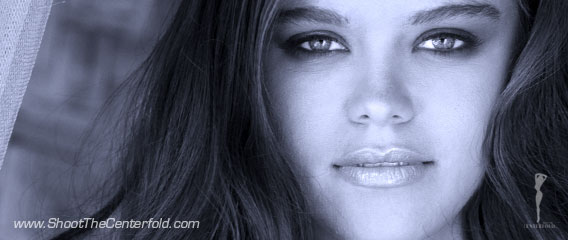Pre-Production, Production and how to get the “Money Shot.”
By: Jarmo Pohjaniemi
The beauty of photography is that each photographer has his or her own way of shooting and capturing their desired photo. After seeing endless images and hearing of how most photographers just patch things together at the last minute, it prompted me to write about the production of a shoot and how Steve, Byron, Ales, and myself, prepare for shoots and where the crucial moments are created, even before they’re shot.
I’m sometimes blown away – but not really surprised – by the way some photoshoots are conducted. Again, everyone has their own way of doing things, but it’s beyond me how anyone can achieve excellent results using these methods and without preparation. The responsibility and top priority of any successful photographer is achieving an efficient and thorough organization of their team. After all, it’s the photographer’s name that will be going on the final product and if the shot fails, people won’t be blaming the crew, will they?
 The photo buzzwords on photographer’s lips have always had something to do with their beloved gadgets and gizmos. It’s almost like an international greeting; “What type of camera are you using?” or “What size of lens is that?” Our storage spaces and camera bags are brimming with the latest doo-dads and doohickeys. I admit that I’m also somewhat of an equipment collector (although my friends and crew have been known to use the term “hoarder” now and then), but I choose to describe it as a pleasant distraction that happens to coincide with my occupation.
The photo buzzwords on photographer’s lips have always had something to do with their beloved gadgets and gizmos. It’s almost like an international greeting; “What type of camera are you using?” or “What size of lens is that?” Our storage spaces and camera bags are brimming with the latest doo-dads and doohickeys. I admit that I’m also somewhat of an equipment collector (although my friends and crew have been known to use the term “hoarder” now and then), but I choose to describe it as a pleasant distraction that happens to coincide with my occupation.
Here are a few things to keep in mind:
- Amateurs worry about equipment.
- Professionals worry about time.
- Masters worry about lighting and production.
Everyone has to start somewhere, and I can clearly recall being in the first group myself, worrying about equipment that never seemed to be quite right and dreaming how nice it would be to have any piece of gear I needed to make a shoot work. These days, I’ve been depleting my photographic arsenal, literally in bits and pieces, giving away equipment to those who deserve a fair shot in the industry and show a real passion for the work.
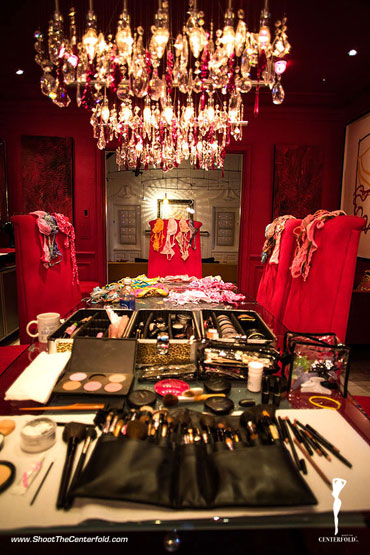 Regardless of your equipment, it all comes down to knowing what we need to make the shot “pop” and really stand out with the tools and resources at our disposal. No more. No less. The success or failure of a photoshoot is the sole responsibility of the man behind the camera.
Regardless of your equipment, it all comes down to knowing what we need to make the shot “pop” and really stand out with the tools and resources at our disposal. No more. No less. The success or failure of a photoshoot is the sole responsibility of the man behind the camera.
In all actuality, the “money shot” is usually achieved within the first hour from the start of shooting and the rest of the day is merely variations of the shot or using different outfits and/or secondary locations. Why, you may ask? It is all due to the preparation and production that was conceptualized and completed prior to the first press of the shutter. If you ever find yourself struggling during a photoshoot or futilely wrestling with things that come up seemingly out of nowhere at the last moment, I’m almost certain that most of the time it happens because you didn’t study and do your homework.
There’s nothing better than sitting in front of your computer and opening your photo editing program, realizing that instead of looking for the money shot, you’re struggling which shots to use because they’re all excellent usable (and marketable) images. This is the result of proper planning, good production and having an excellent team working beside you. I usually do my editing the next day so I can start looking and analyzing with a fresh mind. Just think of it as letting your work “simmer” to bring out the full flavor of your work. This way it’ll be easier to spot any small mistakes you might have missed earlier in the heat of the photo moment.
So, let’s put this all in simple terms of how we prepare for a shoot.
As for myself, the stress starts way in advance and intentionally so. It’s better to be stressed out and focusing on details before the shoot and get issues and potential problems out of the way so you can be completely stress-free the day of the shoot, which is how it should be. My philosophy is that there’s no such thing as a small detail: Each detail, no matter how infinitesimally small, should add to your image’s overall success. No stress means being able to enjoy the day and focus your complete attention on the job at hand, not if you remembered to put batteries in your light meter.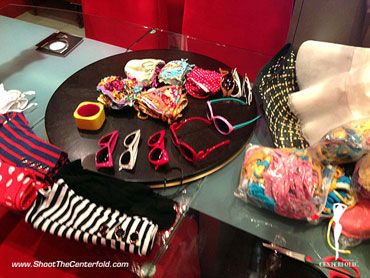
I usually book my shoots a minimum of two to three weeks in advance, time allowing. This way I can research ideas, look for appropriate locations, and finalize the look and feel of what I want to achieve. I call all of the reliable modeling agencies, set up a casting and see anywhere between 100 to 150 girls, then carefully select one suitable for the project. A few days later, I also do a callback to make sure the correct one has been chosen. To make things easier, we have several models at one callback, even though they may be set up for different shoots. This way we can have extra time to find other clothes and accessories if necessary.
During this callback, we do a fitting to make sure the model candidate looks perfect in the outfits we’re planning to use for the shoot. Even if it’s just the most miniscule string bikini that doesn’t have enough fabric to cover a sheet of paper, it either looks great on her or it doesn’t make the cut. In addition to the callbacks and fittings, we had a few prospective models walk up and down my hallway as if it were a runway, just to be able to evaluate their body language and follow movements. Learning how to pose is important, but it’s also essential for a model to move from one pose to another smoothly and gracefully. While a model may be beautiful and physically attractive, she should also be able to be comfortable in how she moves. Otherwise, it’ll show up in the pictures and you’ll have wasted your time.
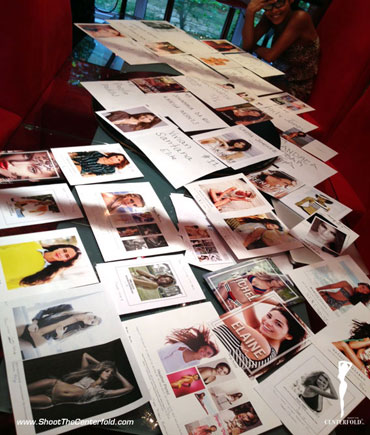
We have all worked with models that simply do not know how to move in front of the camera. Well, this does not happen to me as long as I am in charge of choosing the model(s) for the job. Now, you will from time to time get a model hired by a client or editor and you’ll have to limp and drag through the entire day while trying to make the best from what’s been given. Most clients include photographers in the casting process for good reason. Great minds think alike and supervisors know the photographer is the one who must make the magic happen. The best editors will always trust their photographer’s judgment because the success of the project relies on you and your skills.
In the two or more weeks of pre-production leading to the shoot, depending on its complexity, I need to make certain that the model, the crew, location, wardrobe, lighting, hair and make-up, style, and even my mindset, all work cohesively and as flawlessly as possible. Select your crew wisely and secure any permits required. Most of all, don’t leave anything to chance! This especially goes for the weather. While it may be difficult to predict a forecast three weeks in advance, this is why you need to have a “Plan B” (or even a “C”) in place so your production doesn’t go belly up and you end up with nothing to show for it.
I can hear what you’re thinking: “It’s all easy for you to say, Jarmo. You’ve got everything you need at your fingertips and I’ve got next to nothing in equipment and models that will never look anywhere close to the ones you use.” While I do have the benefit of having the equipment and models I need – and I’ve said this before – is that none of it would matter without the proper planning and knowledge.
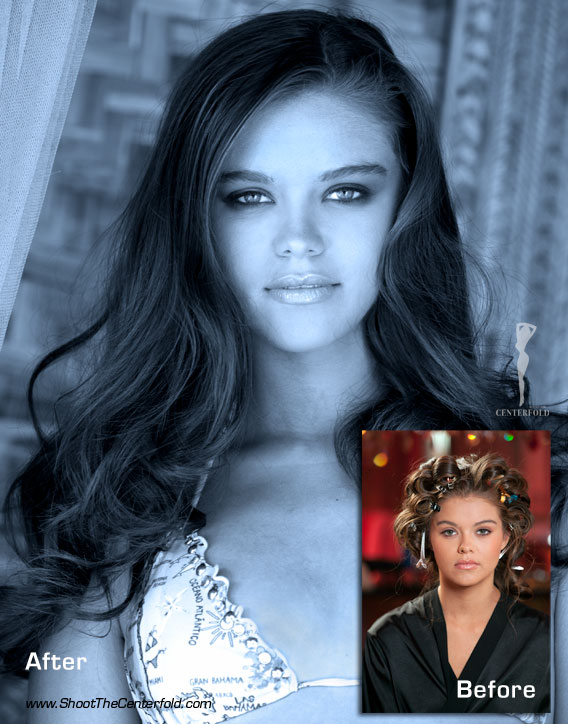
The concepts, principles and practices mentioned here can be applied and used effectively at any skill level from beginner to master. If you know what you’re doing and believe in your art, you could even use a Smartphone (and some people do) to get the job done, if necessary. The key to making things work for you is to know your strengths and limitations: Stay in total control and keep your boundaries in clear sight. Compromise if you must, but only as a last resort and only if it’s to your advantage.
So, the day of the shoot has arrived. You are stoked and full of excitement and adrenaline because you’ve got all the bases covered and ready take care of business. You are super-confident and know everything is going to happen as it should, not because you have superpowers or can predict the future, but because you have already lived this day over and over in your mind during pre-production and more than prepared to deal with anything that comes your way because you won’t take no for an answer and you’re not going to let anything stand in the way of your success!
This is how I roll and it can be the same for you when the magic we know as photography happens, or as I like to call it, a perfect day!
Here’s a sample graph of the pre-production and the production.
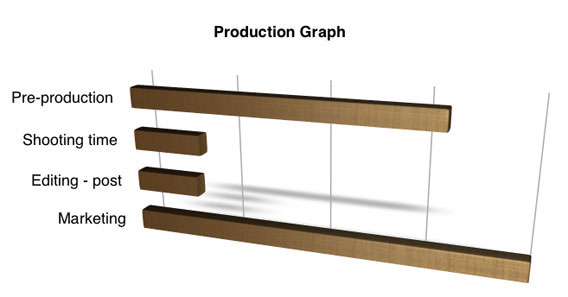
© 2013 Copyright ShootTheCenterfold.com. All rights reserved





